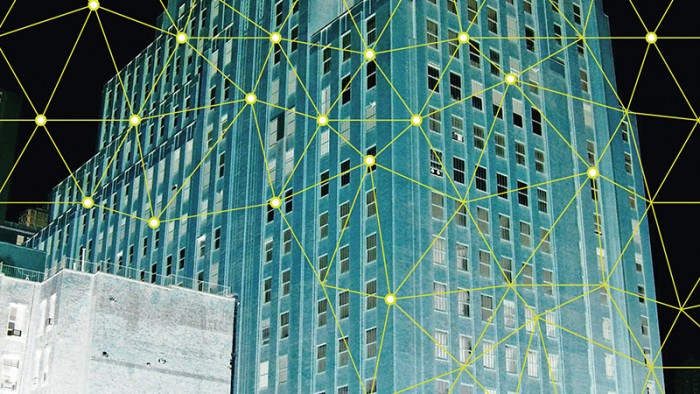 Natural Sciences
Natural Sciences
Averting Internet Disaster

A classic art deco building in Manhattan—60 Hudson Street—is now a modern hub for Internet communication.
The former Western Union building (pictured), which spans an entire block in midtown Manhattan, was built in the 1920s as a headquarters for a breakthrough 20th-century technology: the telegraph. Today, it houses banks of computers that carry Internet traffic for more than 60 telecom companies.
Buildings such as these are found the world over. They’re called “carrier hotels,” and they’re the key to a critical question about the Internet: How would a terrorist attack, a hurricane or even a power outage in one place affect connectivity for users elsewhere?
Believe it or not, we don’t know much about the vulnerabilities of the Internet when it comes to potential disruptions such as these. But Reza Rejaie, an associate professor in the Department of Computer and Information Science, has found a way to answer these critical questions.
Rejaie and colleagues from Duke University and New Jersey–based Niksun Inc. have received $500,000 from the National Science Foundation to map Internet connections across the globe. Establishing a robust “Internet topology” will be a major first step toward understanding the vulnerabilities of the Internet as a whole to any disruption.
Think of the Internet as a huge collection of interconnected computers. These computers are called routers because they route messages from one computer to another across the network—say, from the CNN website to your laptop. Companies such as AT&T and Comcast own and manage their own networks—linking together scores of these routers—to serve an area as large as a city, a state, a country or the entire world.
The Internet comprises more than 40,000 such networks worldwide. They are connected to one another by wiring together some of the major routers at carrier hotels—for example, AT&T and Comcast might connect their networks at a few such buildings in Seattle, Chicago and Miami.
The carrier hotels are therefore key to creating a useful map of Internet connectivity, since they act as hubs where different networks connect and exchange traffic, Rejaie says.
“Existing Internet maps are either too abstract or too detailed,” he said. “They present a pretty picture but are of limited use for investigating the Internet’s vulnerabilities because they neglect the physical location of places where different networks connect and are therefore generally incomplete.”
Rejaie’s approach is different: He is mapping individual carrier hotels where networks connect.
Consider the carrier hotel in downtown Seattle at 2001 Sixth Avenue, which is owned by Colorado-based Zayo. Using Zayo’s website, Rejaie can easily find companies that have networks in this building, such as AT&T and Verizon. Then, using what he calls “probing messages,” he can track the route that a message takes as it traverses two networks in the building.
The goal is to create an Internet-wide map that identifies the networks located in these critical locations and how they connect to each other. This will then help predict how the flow of Internet traffic might be disrupted in the event of a major catastrophe—and how it might be rerouted as a response to that disruption.
“What we do is detective work,” Rejaie said. “Understanding where and how networks connect is essential for understanding how the Internet can be affected by various events.”
—Matt Cooper


 Twitter
Twitter Facebook
Facebook Forward
Forward